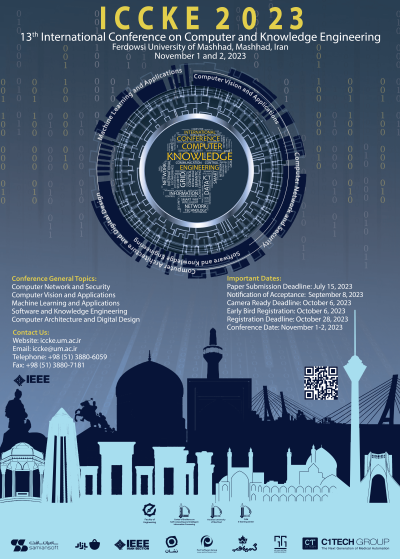0% Complete

Authors :
Keywords :
Abstract :
List of archived papers
Arash Vashagh - Amirhossein Akhoondkazemi - Sayed Jalal Zahabi - Davood Shafie
Alireza Azadbakht - Saeed Reza Kheradpisheh - Hadi Farahani
Narjes Heidari - Javid Norouzi - Mohammad Sadegh Helfroush - Habibollah Danyal
Hamid Ahmadabadi - Omid Nejati Manzari - Ahmad Ayatollahi
Abdolrasoul Sakhaei Gharagezlou - Mahdi Nangir
Fatemehsadat Ghanadi Ladani - Hamidreza Baradaran Kashani
Elham Akbari - Azam Bastanfard
Mohammad Ali Zarif - Javad Hamidzadeh
Amirhossein Ghaemi - Seyyed Amir Mousavi mobarakeh - Habibollah Danyali - Kamran Kazemi
Zahra Bakhshandeh - Morteza Keshtkaran




